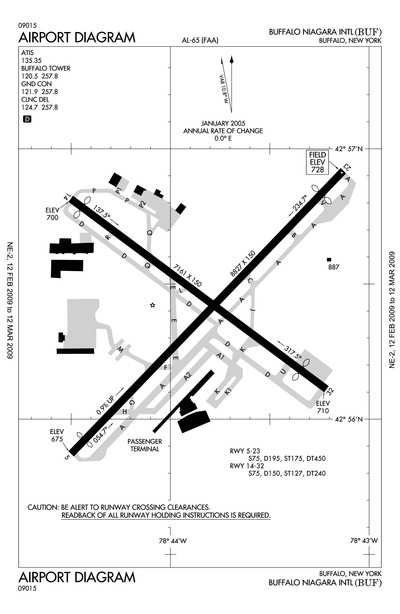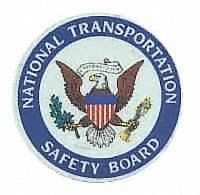Pilot Error, ILS Problems Among New Theories In Flight 3407
Downing
 Following revelations by the National Transportation Safety
Board about the last few seconds of Continental Connection Flight
3407's failed instrument approach into Buffalo last week, Colgan
Air is defending the training and experience of the accident pilot,
Capt. Marvin Renslow.
Following revelations by the National Transportation Safety
Board about the last few seconds of Continental Connection Flight
3407's failed instrument approach into Buffalo last week, Colgan
Air is defending the training and experience of the accident pilot,
Capt. Marvin Renslow.
The Associated Press reports Colgan Air, the subsidiary of
Pinnacle Airlines operating the flight, issued a statement
Wednesday declaring the airline's crew training programs "meet or
exceed the regulatory requirements for all major airlines.
"Colgan has instilled a systemic culture of safety throughout
our organization that is rooted in significant investment in crew
training, systems, leadership and equipment," the airline
added.
Those comments came following news reports this week calling
into question the actions of the Q400's flight crew in the final
moments before the regional aircraft impacted a home in Clarence
Center, NY, killing all 49 persons onboard the plane and one on the
ground.
Early speculation has focused on the possibility icing
contributed to the accident. In a story Wednesday titled "Pilot
Action May Have Led To Crash," however, the Wall Street Journal --
citing unnamed sources said to be familiar with the NTSB's ongoing
investigation -- reported data from the accident aircraft's flight
data recorder shows Renslow pulled back on the yoke and throttled
the engines up when the aircraft stalled, instead of pushing the
nose forward to build speed.
The WSJ article also notes the relatively low amount of time --
said to be just over 100 hours -- Renslow had in the left seat of
the Q400. A 3,379-hour Captain with Colgan, Renslow had just
upgraded to the Q400 in December; First Officer Rebecca Shaw had
lower cumulative hours, but 774 in type.

Some of the focus on potential pilot error was diverted
Thursday, when reports surfaced Southwest Airlines issued an
advisory to its pilots in the weeks before the Colgan crash that an
earthen dam off the end of Runway 23 at Buffalo Niagara
International Airport has been known to interfere with the ILS, in
a way that could cause autopilots to command a sudden nose-up
attitude... similar to what preliminary data suggests occurred
onboard Flight 3407.
 "Pilots who are preparing to configure and land have the
potential to experience abrupt pitch up, slow airspeed, and
approach to stall if conditions present themselves in a certain
manner," the advisory reads. CNN reports Southwest reissued the
warning February 11, one day before the Colgan crash.
"Pilots who are preparing to configure and land have the
potential to experience abrupt pitch up, slow airspeed, and
approach to stall if conditions present themselves in a certain
manner," the advisory reads. CNN reports Southwest reissued the
warning February 11, one day before the Colgan crash.
As ANN reported last week, the Q400 impacted
in the vicinity of the KLUMP Initial Approach Fix, 4.4 nautical
miles from the threshold of Runway 23 at BUF. In the moments after
the plane disappeared off radar, an air traffic controller asked
other pilots in the area if they had noticed any discrepancies with
the localizer, after a Delta jet in trail of the Colgan plane
reported fluctuations at around 1,500 feet. No error indications
with the localizer were noted by the tower.
Radar data shows the Colgan flight encountered problems within
moments after the landing gear was extended, and the flight crew
lowered the first 15 degrees of flaps. Southwest Airlines
spokeswoman Linda Rutherford would not say whether any Southwest
planes had encountered problems flying the ILS down to 23 at
Buffalo.
The NTSB says it is aware of the report... but the Board has
also noted that leaving the autopilot on during approach during
significant icing went against both FAA recommendations and Colgan
policy. The NTSB has been pressuring the FAA for years to make
tuning off the autopilot mandatory in such conditions.
The NTSB's official report on probable cause is expected to take
at least a year.
 Aero-News: Quote of the Day (11.17.25)
Aero-News: Quote of the Day (11.17.25) ANN's Daily Aero-Term (11.17.25): NonDirectional Beacon
ANN's Daily Aero-Term (11.17.25): NonDirectional Beacon NTSB Final Report: Fred L Wellman CH 750 Cruzer
NTSB Final Report: Fred L Wellman CH 750 Cruzer ANN's Daily Aero-Linx (11.17.25)
ANN's Daily Aero-Linx (11.17.25) Airborne-NextGen 11.11.25: Archer Buys Hawthorne, Joby Conforms, Stranded Astros
Airborne-NextGen 11.11.25: Archer Buys Hawthorne, Joby Conforms, Stranded Astros





